For most people, planting grass means cool days in the spring or fall. These are the best times to plant seeds and care for new, green lawns. But sometimes, summer is the only time that works for establishing or fixing a lawn, whether it’s for a new build, yard work, or covering up bare spots. Most people think that planting grass seed in summer is almost impossible because of the high temperatures and higher water needs. But if you plan and prepare well, you can plant grass seed in summer and be successful.
This article talks about the difficulties of planting grass seed in the summer, the best types of grass for hot weather, how to prepare the soil, the right way to water, and how to keep your grass plants safe from the extreme heat. You’ll have everything you need to grow a healthy garden even in the hottest months by the end.
Is It Possible to Plant Grass Seed in Summer?
It’s not ideal to planting grass seed in the summer, but it’s not impossible either. The biggest problems with growing in the summer are:
- High temperatures: These can make water evaporate quickly, which makes it hard for grass seeds to stay moist.
- Increased water requirements: Grass seeds require a constant moisture level, which is more difficult to maintain when the temperature is high.
- Heat stress: High temperatures can be hard on new plants, which can slow their growth and cause some of them to only germinate in some places.
Still, if you’re careful, summer seeding can work, especially if you need to fix bare spots or start a new lawn after building. You can get through these problems if you plan ahead and take care.
Why People May Need to Plant Grass in Summer
- Lawn damage from construction or repairs.
- Bare patches that need immediate attention.
- Preparing for an event or improving curb appeal during the warmer months.
It’s usually easier to plant grass in the spring or fall, but if you do it right, you can also plant grass in the summer. Let’s look at how.
Best Types of Grass Seed for Summer Planting
It is essential to select the appropriate variety of grass seed when planting during the summer months. Warm-season grasses are the ideal option for planting throughout the summer because they tolerate hot temperatures and grow in it. On the other hand, cool-season grasses may have difficulty surviving in extremely hot conditions, but they are able to do so if they are planted with more care and attention.
Warm-Season Grasses
1. Bermuda Grass
This grass can handle a lot of heat, does well in full sun, and doesn’t need much water once it’s established. Bermuda grass grows quickly and does well in places where summers are hot and dry.
2. Zoysia Grass
Zoysia grass is tough and robust, and it is known for being able to handle heat and drought. It grows slowly and makes a thick mat of grass. This makes it great for stopping soil erosion.
3. Bahia Grass
This grass doesn’t need much care and can survive in bad soil and drought. It works great on fields in the south of the United States, where summers are hot and dry.
4. Buffalo Grass
Buffalo grass grows best in full sun and doesn’t mind being dry. It is native to the plains of North America. It does well in hot places and doesn’t need much water.
Cool-Season Grasses
It’s riskier to plant cool-season grasses in the summer, but some types can still do well if they get the right care:
1. Fescue
This is a tough cool-season grass that can handle higher temperatures if it gets enough water. Fescue grows best in places where summer nights are cooler or where the weather is mild.
2. Kentucky Bluegrass
Kentucky bluegrass, which has a lush, green look, needs more water and care when grown in the summer, but it can do well if the right conditions are met.
3. Blending Grass Types
Mixing warm-season and cool-season grasses can sometimes make a yard more resilient, allowing it to do well in a range of temperatures.
Can You Plant Grass Seed in the Summer?
One of the most common questions homeowners and gardeners ask is, Can you plant grass seed in the summer? The simple answer is yes, but there are a few things you should know first. Because of higher temperatures, faster soil loss, and higher water needs, summer is not the best time to plant seeds. To plant grass during this time of year, you will need to know the right way to do it and be extra careful.
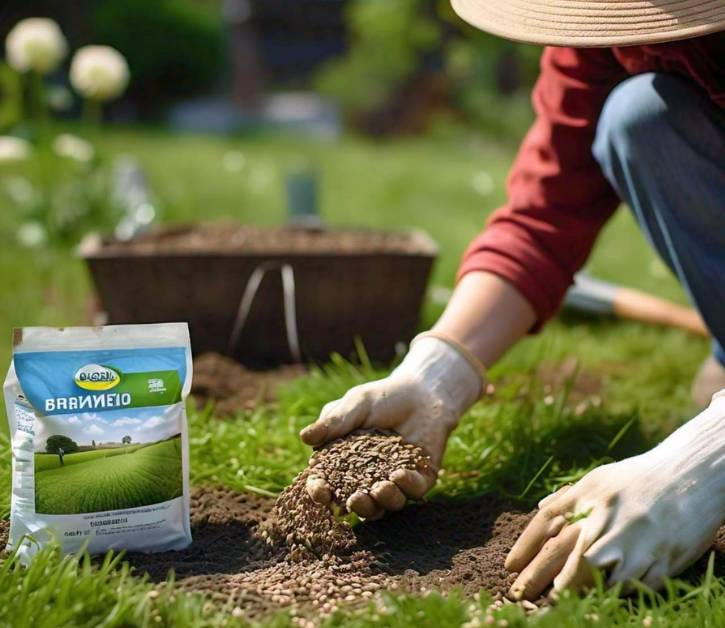
If you want to plant seeds in the summer, keep these things in mind:
- Choose the Right Grass: For summer planting, Bermuda, Zoysia, or Buffalo grass are all warm-season plants that do well. These types of plants can handle more heat and do better when it’s hot outside.
- Watering is Critical: For grass seeds to grow, they need steady wetness, which is especially important in the summer. In the first few weeks, you need to water your plant often and lightly. Watering in the early morning or late evening helps keep water from evaporating.
- Protection from Sun: Young grass plants can get burned by direct sunlight. You might want to give seedlings brief shade during the hottest parts of the day to keep them from drying out or getting sunburned.
- Start Small: Start with a small area to see if you want to put grass seed in the summer. This lets you see how well the care is working and make changes before you commit to a full lawn.
Soil Preparation for Summer Grass Seeding
When it comes to successful summer sowing, proper soil preparation is absolutely necessary. If your soil is good, your grass seeds are more likely to grow, even when it’s hot outside.
Key Steps for Soil Preparation
1. Soil Testing
Testing the pH and nutrient levels of the soil should be done before planting. When it comes to soil, grass thrives on soil that has a pH that falls between 6.0 and 7.0. If the pH needs to be raised, add lime; if it needs to be corrected, add sulfur. Based on the test results, you may need to add fertilizers or other changes to the soil to make it healthier.
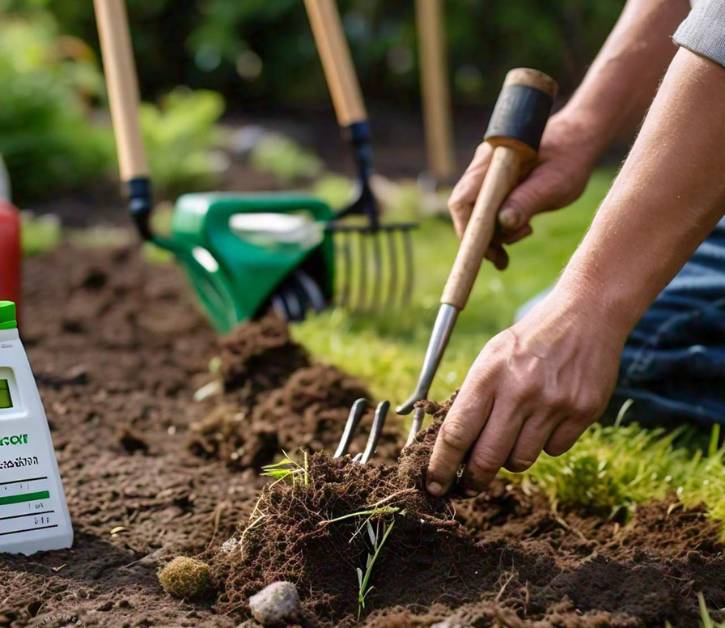
2. Clearing Debris and Weeds
Get rid of all the weeds, rocks, and dead grass in the growing area. Weeds are always trying to get nutrients and water, which are hard to come by in the summer. Either pull them out by hand or use a pesticide at least two weeks before you plant.
3. Loosening and Aerating the Soil
Break up the soil at least two to three inches deep. This helps roots grow and keeps water in the soil better, which are both very important on hot, dry summer days. To loosen soil that has been compacted, you can use a garden fork, a tiller, or an aerator.
4. Adding Organic Matter
Adding organic matter like fertilizer to soil makes it stronger, adds nutrients, and keeps more water in the soil. Organic matter helps the soil keep water for longer, which makes it easier for seeds to germinate when it’s hot outside.
5. Leveling the Area
Make sure the ground is level so that water doesn’t pool in some places and cause uneven growth. To make the ground smooth and even, rake it.
Best Timing for Summer Seeding
- Plant Early Morning or Late Afternoon: You can plant grass seed early in the morning or late in the afternoon, when it’s cooler. The seeds have time to settle before the heat of the day, and the water loss is cut down.
- Plant on Overcast Days: Plant on a cloudy day if you can avoid the damage that direct sunshine occurs. This helps the soil keep its moisture, which increases the chances that seeds will make it through the first few crucial days.
- Monitor Weather Patterns: It’s best not to plant right before a heatwave because the high temperatures can dry out the soil and make the seedlings stressed. Find times when the weather is mild, or plant after a light rain, when the soil is already damp.
- Late Summer Seeding: Seeding in the late summer can be more successful in areas that have climates that are more temperate. As fall approaches, temperatures will drop and there will be more rain, which can help plants grow before winter.
Watering Techniques for Summer Seeding
One very important part of planting grass seed in summer is making sure the seeds get enough water. Because water evaporates quickly, it’s important to keep the soil regularly wet without giving it too much water.
Best Watering Practices
- Frequent, Light Watering: The soil needs to stay moist for the first 2 to 3 weeks after planting. Do not flood the soil; just lightly water it 2 to 3 times a day, mainly in the morning and evening.
- Avoid Watering During Peak Heat: When you water in the middle of the day, the water evaporates quickly and can burn the young plants. If you want to keep watering your plants, only do it early in the morning or late in the afternoon.
- Deep Watering After Germination: Once the grass is set and roots have started to grow, water it less often and deeper. This helps the grass’s roots grow thicker, which makes it better able to handle the heat of summer.
- Mulching or Using Straw: The area that has been seeded should be covered with a thin layer of mulch or straw. This helps the soil stay moist, keeps the seeds out of direct sunlight, and keeps it from drying out too fast.
Protecting Grass Seedlings from Summer Heat
Grass plants can die in very hot weather. Here are some ways to keep your new grass safe from the hot summer weather:
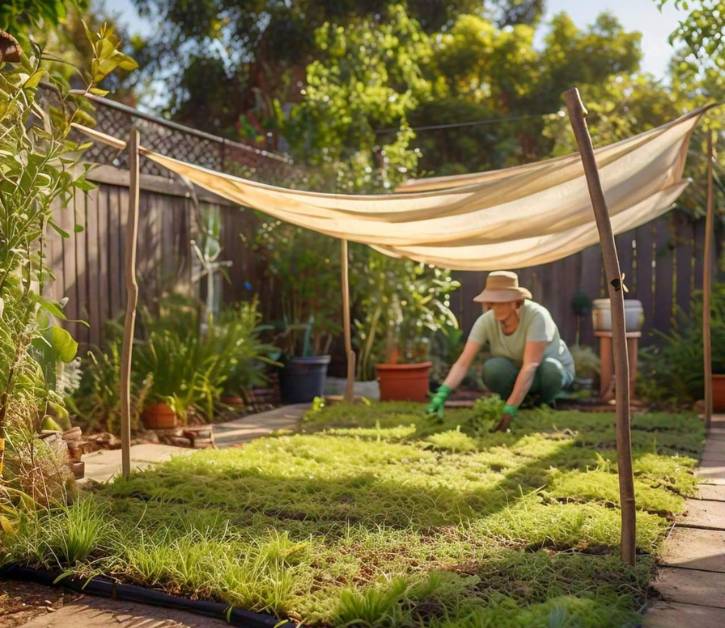
Strategies for Heat Protection
- Temporary Shade: Cover the seedlings with shade cloths or garden fabric for a short time to keep them out of direct sunshine during the hottest parts of the day. This helps keep the soil from drying out and keeps the seedlings from getting too hot.
- Wind Protection: The wind can dry out the soil and seedlings. To stop the wind from drying things out, use garden netting, fencing, or tall plants as windbreaks.
- Fertilizing Wisely: It’s best not to fertilize too much in the summer because it can stress out the plants. Choose an organic or slow-release fertilizer that gives your plants nutrition slowly over time.
- Use Lawn Blankets: If you’re planting in a very hot area, you might want to use a lawn blanket. These are made to keep seeds and seedlings from losing heat and water while still letting sunlight and water reach the plants.
Common Mistakes to Avoid When Planting Grass Seed in Summer
When you seed in the summer, you need to be extra careful, and it’s easy to make mistakes. Take care not to make these mistakes:
- Overwatering: Seeds need a steady amount of water, but too much water can kill the roots or wash the seeds away. Stick to light watering that you do often.
- Planting in Peak Heat: If you plant seeds in the middle of a storm or during the hottest part of the day, they might not grow. Always sow your seeds at colder times of the day.
- Not Preparing the Soil Properly: Not loosening or amending the soil before planting in the summer is important for root growth and water retention.
- Using the Wrong Grass Seed: When you plant cool-season grasses in hot weather without giving them the right care, they may only grow in spots or not at all. Always pick grass types that can handle the heat of summer or take very good care of them. Your summer lawn will do much better or worse depending on whether you choose warm-season grasses or well-kept cool-season types.
Long-Term Maintenance of Grass Planted in Summer
Even after the grass seeds are established, they will still need care to make sure they make it through the summer and continue to grow well in the fall. Here’s how to keep the summer grass you just put healthy:
1. Consistent Watering
Once the grass has sprouted and started to grow, water it less often and deeper. This helps the roots grow thicker, which is important for staying alive in the heat. But be careful not to let the soil dry out too much, because young grass plants still have shallow root systems.
- Morning watering is ideal: Watering the grass in the early morning is still the greatest technique for preventing evaporation and allowing the soil to absorb more moisture. This is especially true when the grass comes into maturity.
- Avoid watering in the evening: This can make it easier for fungi to grow because the grass blades will stay wet overnight, which could lead to a disease.
2. Fertilizing
Fertilizing can help plants grow quickly and thickly, but it’s important to do it right in the summer. Use a nitrogen-based fertilizer that releases nutrients slowly so that the plants don’t get too much at once.
- Timing matters: If you don’t want to stress the grass out with poisons and heat, fertilizer should be applied early in the morning or late in the afternoon.
- Avoid over-fertilizing: When it’s hot outside, too much fertilizer can burn your grass. Usually, a balanced treatment every 6 to 8 weeks is enough.
3. Mowing
Mowing is an important part of keeping your garden in good shape in the summer. But you shouldn’t mow grass that has just been planted until it’s about 3 to 4 inches tall. Too early of a cut can stress the plants and stop their growth.
- High mowing is key: Set your mower blades high when you start to mow. Keeping the grass longer helps keep the soil cool, wet, and shaded from the sun, which can hurt the young roots.
- Frequent mowing: Once the grass is established, mow it often to keep it at a height of about 3 inches, which is best for most types of grass in the summer. To avoid stress, don’t cut more than a third of the grass blade at a time.
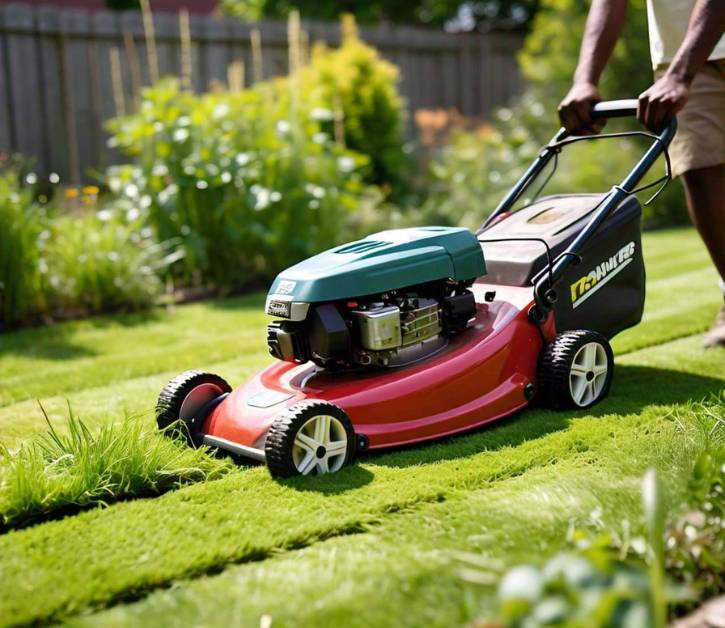
4. Weed Control
In the summer, weeds are common and can quickly take water and nutrients away from new grass. Check your garden often for weeds and pull any that you see by hand. Chemical weed killers should not be used on new grass because they can hurt or kill plants that are still fragile.
Natural methods: To keep weeds from growing into your grass, put mulch around the edges of your garden. In the early stages of grass growth, you might want to use hand pulling instead of chemical pesticides.
5. Pest Management
Pests and insects may be more active in the summer, when they feed on the grass’s tender blades and roots. Pay close attention to any pests that might be in your garden and treat them as needed.
- Grubs and worms: If you don’t get rid of lawn grubs, which eat grass, they can do a lot of damage. Use an insecticide that is safe for grass to get rid of any pests, but be careful not to use too much on new lawns.
- Natural predators: You might want to bring good bugs or birds into your garden. They can help naturally control the number of pests.
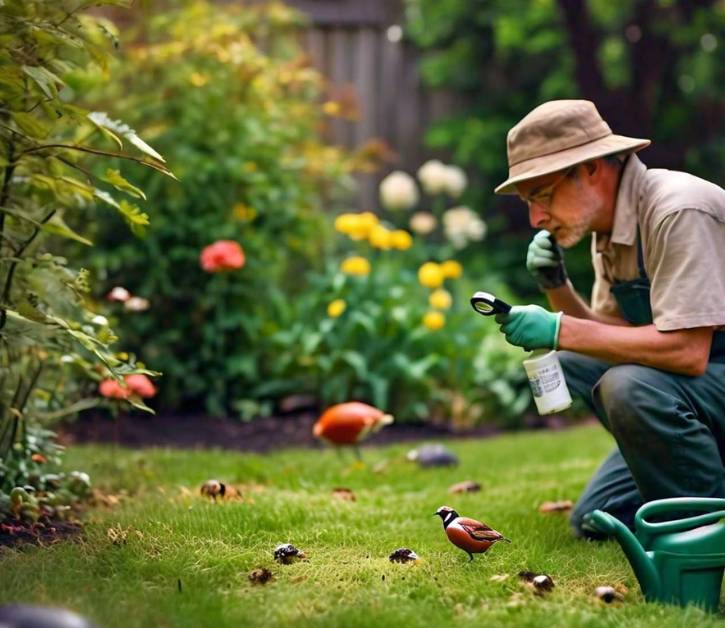
Seasonal Considerations and Preparing for Cooler Months
It’s not just during the hottest months that summer planting needs care. You should also think about how to move your garden landscape from summer to fall so that your work continues to pay off as the seasons change.
1. Overseeding in Fall
When it gets cooler in late summer or early fall, you might need to cover over places that didn’t grow as thickly as you wanted. It’s best to overseed in the fall because the cooler weather is better for young plants and there is more natural moisture.
- Use compatible grass seeds: If you put warm-season grass in the summer, cover it with a cool-season grass or another type that does well in cooler weather.
- Prepare the soil again: Before you plant the seeds, lightly rake the soil to help the seeds get into the soil.
2. Aeration and Thatching
It is possible for lawns that were planted in the summer to have compacted soil, especially if a lot of people walk on them. The grass should be aerated in the fall to increase air circulation and water penetration, both of which contribute to the healthy growth of the roots.
Thatch removal: Thatch is a layer of organic matter that can form between the grass and the soil. It makes it harder for the grass to take in water and nutrients. In early fall, use a rake or other dethatching tool to get remove of it.
3. Fall Fertilization
Your lawn will look better after one last round of fertilization when the weather gets cooler. Pick a fertilizer that has more potassium because it helps roots grow and gets your garden ready for winter.
Cool-weather feeding: Using fertilizer in the fall helps grass store nutrients that will help it grow in the spring.
4. Preparing for Winter
If you put cool-season grass in the summer, it will still do well when the weather gets cooler. Warm-season plants, on the other hand, will start to die back. To get your yard ready for winter:
- Water until the first frost: Maintain a regularly watering schedule for your grass until the first frost of the season passes.
- Reduce mowing frequency: You are able to reduce the number of times you mow as the growth rate slows.
Conclusion
Planting grass seed in summer can be tricky, but it can be done smoothly with the right care and planning. To help your new lawn live and grow in the heat, you need to choose the right type of grass seed, prepare the soil well, and keep an eye on how much water it gets. By following the steps in this guide, you can keep your lawn healthy and green even when it’s very hot outside.
Remember that planting seeds in the summer takes time and care, but it’s not impossible. Even when it’s hot outside, your garden can grow well if you plan ahead and keep up with the care it needs. If you’re not sure, test your grass in a small area to see how it does in the summer and then move on to the rest of the yard. And once your lawn is established, it will stay healthy for years to come with the right yearly care.
FAQs
Can you plant grass seed in the summer?
Yes, you can plant grass seed in the summer, but you need to be more careful. Pick plants that can handle heat, like Zoysia or Bermuda, water them often, and give them shade during the hottest parts of the day. It’s harder to do than planting in the spring or fall, but if you do it right, you can be successful.
What happens if my grass doesn’t grow evenly?
When grass is planted in the summer, it often doesn’t germinate properly because of uneven watering or changes in temperature. Overseeding bare spots in early fall, when it is cooler, is the best way to go. Change the way you water your lawn so that it gets the same amount of water all over.
Can I plant cool-season grass in summer?
Yes, but you need to be extra careful. If you want to grow cool-season grasses like fescue or Kentucky bluegrass in the summer, make sure they get enough water, shade, and mulch to keep the seeds from dying from the heat. Expect slower growth and the need to reseed in the fall.
How much water does newly planted grass need in summer?
For new grass seed put in the summer to grow, it needs to be kept moist, which means it needs to be watered 2 to3 times a day at short, regular intervals. Always keep the top 1 to 2 inches of soil moist, but don’t water too much, as that can cause diseases and seeds to move around.
Can I fertilize my lawn immediately after planting grass seed in summer?
It’s best not to fertilize right after planting, especially when it’s hot outside. Before you use a light, slow-release fertilizer, wait until the grass has sprouted and grown a bit. If you fertilize too early or with fertilizers that are high in nitrogen, the plants can get burned.
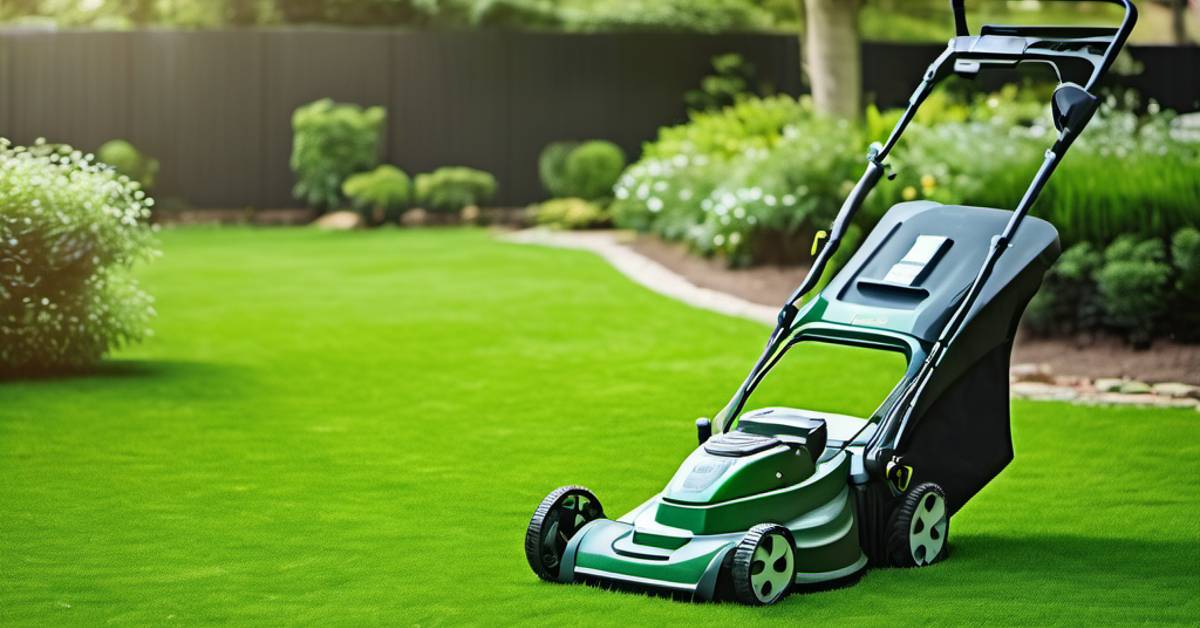

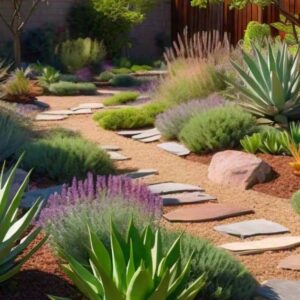
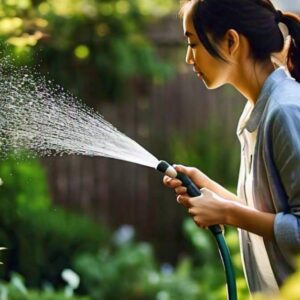
Pingback: Summer Beauty Allium Plant: Mastering the Art of Growing 2024 - Nuturin Plants
Pingback: Rudbeckia Indian Summer Plant | Brightening Your Garden with Golden Blooms - Nuturin Plants